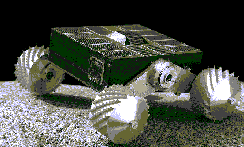behar@robotics.usc.edu
Department of Electrical Engineering
University of Southern California, Los Angeles, CA
• develop concepts for new generations of robot colonies for use in exploring unknown, low gravity terrains
• develop a methodology and metric for evaluating colony performance
• demonstrate aspects of a novel colony using real robots
(Sub-Kilogram Intelligent Tele-robotics Demonstration
sponsor: Space Studies Institute - application: near Earth asteroids)
• Motivation
• Background
• Problem Statement
• Preliminary Results
• Future Work
Current interest in robot colonies
- Need more robust systems
- Need more adaptable systems
- Need more spatially distributed systems
Enabling technology for robot colonies
- Emerging miniaturized systems (lower mass & volume)
Looked at diverse areas for background
- What’s been developed in the
past?
Extraterrestrial Surface Exploration Missions
- What’s it like there?
Asteroid Environmental Challenges
- What’s new that’s applicable?
Enabling Miniature Technologies
Multiple Robot Research
|
• Previous missions used single multi-functional spacecraft with internal redundancy
• Current trends & desires are now motivating multi-agent systems
| Parameter | Effects | Results |
| *
Temperature Diurnal temperature swings (50-430K) |
Embrittlement, Lubricant efficacy Thermal Stresses Possible need for thermal control |
Mechanism Failure Motor Lockup Electronic Interconnect Failures |
| *
Gravity Gradients Weak Field (~.003 m/sec^2) |
Range of gravity’s due to
rotation and shape Low attractive properties |
Mechanisms must move slowly or be self-righting Low escape velocity |
| Chemicals/Minerals in Soil Fines Magnetic Fines Oxidants/Acidic |
Accelerated wear, caking Attraction to magnets Thermal insulation, abrasion Corrosion |
Mechanism Failure Motor Lockup Electronic Interconnect Failures Mechanism Failure |
| Terrain Small Diameter (1 Km) Craggy surface Possible deep or no regolith |
Short distance to horizon Jagged cliffs and valleys Contamination of optics or solar cells |
Difficult path and communication Non-linear traversal Entrapment, Obscuring, loss of power |
| Distance To Earth Inclination |
Comm. traversal distance Difficult comm. viewing angle |
Communication time lag Short comm. windows |
| * Rotation Rates (1-1000 hr) | Effect on insolation Effect on earth viewing time |
Power
starvation, wide thermal cyc. Stalls between comm. links |
| Vacuum Atmosphere | Lubricant efficacy | Motor/Mechanism Lockup |
| System Lifetime | Time effects on materials | Part wear-out |
| * Uncertain Asteroid Properties | Range of values on many parameters | Difficult design process |
* key aspects that drive complexity and requirements
Group Robots (2-20)
- Mataric 1992, minimizing complexity in controlling robot populations
- Parker 1994, fault tolerant cooperation with a group of robots
- Agah 1994, learning coordination in robot colonies
- Kube 1994, collective robotics with no communication and simple behaviors
- Lin 1995, cooperation protocols for multi-agent robotics systems
- Arkin 1994, level of communication needed to perform cooperative tasks
Swarm Architectures (100’s - 1000’s)
- Hiebeler 1994, produced a simulation environment for swarms of agents
- Genovese 1992, self organizing behavior and swarm intelligence
- Beni 1992, self organizing of sensors for swarm intelligence
- Hodgins 1994, behavior of robots in herds with significant dynamics
- Robot group work focused on task descriptions, robot architectures,
environmental factors, and colony organizations
- Swarm intelligence focused on communication protocols, social rules,
and avoiding conflict & deadlock using large numbers of simple agents
- Characteristics differ greatly in works, difficult to compare results
- Colony size is usually fixed and agents are autonomous
- This thesis studies two performance aspects not previously researched:
1) population effects in the face of different environments
2) effects from adding tele-assistance to a colony
Develop a methodology for evaluating the performance of a surface exploration robot colony working in a simulated low gravity environment
Steps taken will be:
- Develop a novel support infrastructure concept to assist colony robots
working in a low gravity environment
- Construct a computer simulation of portions of the robot colony
- Use simulation to determine the effect of colony parameters (population
& tele-assistance) on colony performance
- Validate the simulation on real robots
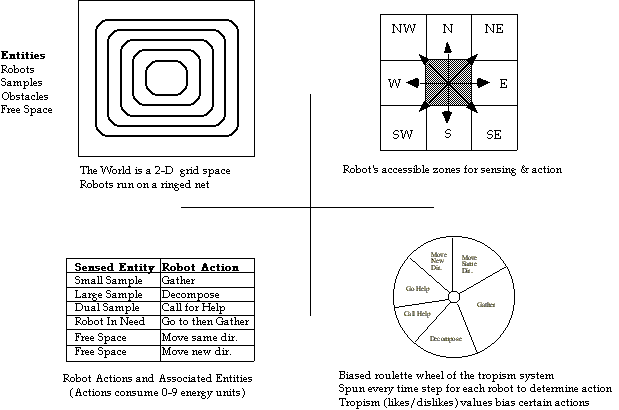
- A: 2-D planar spatial region
- R: Team of Robots
- O: Obstacles to be avoided
- S: Samples to be collected
- E: Total system energy
For R to collectively search A to find objects in S
Secondary Goal:
For R to collectively minimize E
Assumptions:
- Sample and obstacle locations initially unknown to R
- Types of samples: small (can be gathered by 1 robot),
large (must be decomposed), and dual (requires 2 robots)
- Robots can call for help with dual samples
- Operator has knowledge about sample number and type
- number of: robots, samples, sample types, obstacles
(robots: 2-100), (samples, obstacles: 0-1000), (sample types: 1-3)
- level of tele-assistance (# of commands sent to vary robot
parameters)
(Notation adapted from Parker, 1995 DOE/BES Annual Review of CESAR)
- We plan to perform architecture comparative evaluations given a set of constraints
- We plan to use the following initial design of a Figure
of Merit for architecture comparisons
Figure of Merit = colony performance / energy consumed - The Figure of Merit is an indication of colony
efficiency
colony performance = samples gathered / experiment time
energy consumed = Ri consumption
Ri consumption is calculated using a table of action energy values - Tele-assistance changes a robot’s tropism value which gives bias for certain actions
- Tele-assistance causes time steps to elapse with no samples gathered simulates communication delay, effects efficiency
- For an environment
sampling task with a fixed experiment time there is an optimum range of
colony population. Deviation from this range will incur penalties in colony
performance.
- For an environment sampling task with a fixed experiment time there is improvement in colony performance if an appropriate level of tele-assistance is used.
1) Sub-Kilogram Intelligent Tele-robot (SKIT) Concept Development
- Focus:
A study on the relative merits of a colony of miniature intelligent, tele-robots
for exploring an asteroid's surface
- Concept development on a novel exploration colony which used a net to provide a group of heterogeneous robots attachment and mobility
- This work motivated a desire for new simulations to generate guidelines for critical robot colony parameters
2) Sophia Robot Colony Simulator Experiments
- Performed preliminary robot colony parameter experiments to assess simulator utility for future analysis
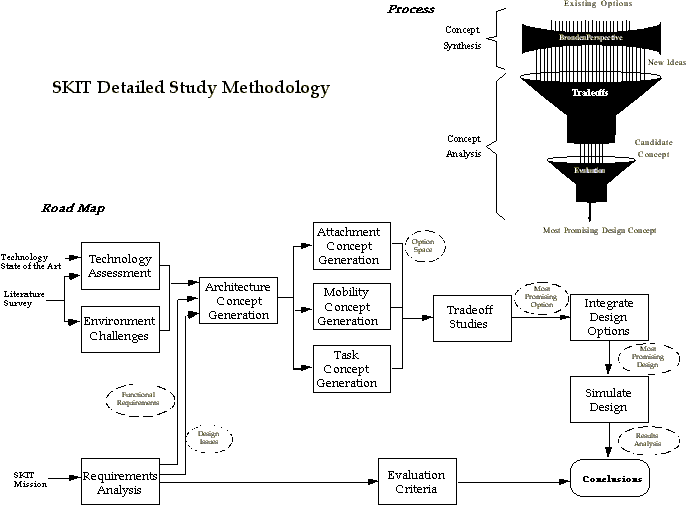
| The data for this table is taken from criteria that is considered Mandatory, Measurable, and Realistic. The must criteria determines the Go/No Go decision for evaluation of each alternative. It in effect i t determines who plays. | |||
| Operation Life > 12 months | Lifetime of SKIT system on surface of an near earth asteroid | qualitative | Experience |
| Mass < 1.0 kg | Mass of each SKIT, infrastructure not included but presumed to not be overwhelming | kg | layout & calculations |
| Power < 5 watts | Power consumed by each SKIT element (max. continuous) | Watts | Layout & calculation |
| Speed > 1 cm/sec | SKIT element terrain traversal rates | cm | calculation/simms |
| Range > 1000 meters | Complete SKIT system must be able to adequately cover an area 1 Km square | meters | Mobility simms |
| Surface Mobility | SKIT elements must provide stable, controllable surface mobility | qualitative | Experience |
| Provide Telecom > 100 bps | SKIT elements must provide mechanism to send/receive/store data & commands between each other and any relay link needed | bits/sec | Telecom simms |
| Provide Surface Operations | Provide several distinct methods of performing surface operations, i.e., drilling, chipping, assembly, lifting, moving, heating, etc. |
qualitative | Operation simms |
| Resist Environment | SKIT system must be able to survive challenges of the asteroidal environment (Baseline: Known Properties for Nereus, Nakamura & Abe 96) |
qualitative | Experience |
| Enable In Situ Science | Provide several distinct methods of obtaining desired in-situ science measurements, i.e., imaging, spectroscopy, terrain mechanics, thermal properties, etc. |
qualitative | Experience |
| Provide Command/Control | Provide ability for distant operator commands to be received, performed & results returned | qualitative | Operation simms |
| The data for this table is taken from criteria that is often the best educated guess for each requirement. The Wants criteria determines the relative value of each alternative. It in effect it discriminate s who wins. | |||
| Minimize Mass | Reduce overall system mass | kg | layout & calculations |
| Maximize Lifetime | Increase overall system lifetime | reliability/surf cond. | Estimate/experience |
| Maximize Traction | Increase system’s ability to attach and provide for optimum stability and movement | qualitative | Mobility simms |
| Minimize Complexity | Reduce mechanical, electrical, computational, and architectural complexity | qualitative | layout & assumptions |
| Maximize Recoverability | Increase probability of in-situ diagnosis and repair | qualitative | layout & assumptions |
| Maximize Range | Increase area covered by the SKIT system | meters | Mobility simms |
| Minimize Computation | Reduce complexity needed to provide computation for all tasks | MIPS | calc from simms |
| Maximize Operations | Increase both operations and science return | qualitative | Operation simms |
| Minimize Cost | Reduce $ amounts to develop and build entire system | relative $ | Estimate/experience |
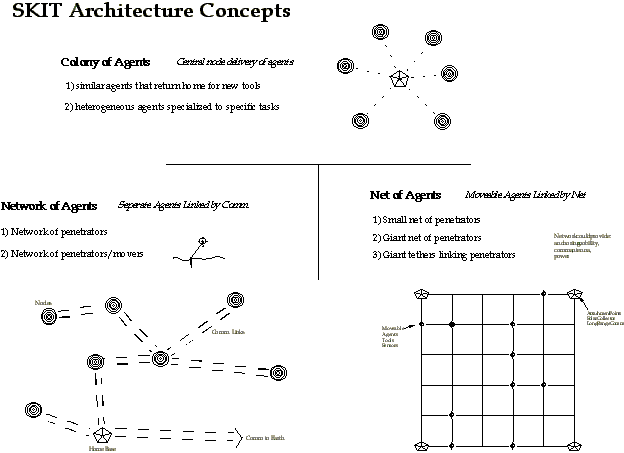
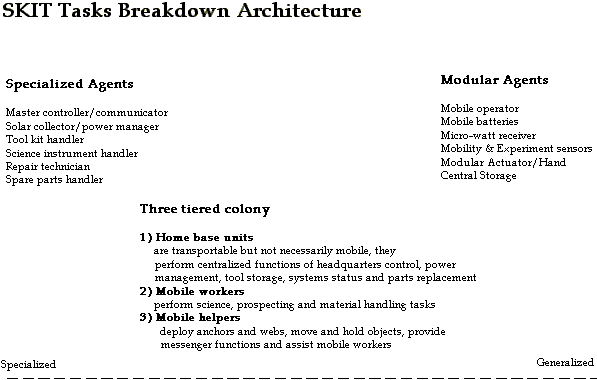
- Colony Architectures
- Member Organization
- Actuation Alternatives
- Instrument Alternatives
- Surface Mobility
- Surface Attachment
| Life > 12 months | ||||||||||||||||||||
| Mass < 1.0 kg | ||||||||||||||||||||
| Power < 5 watts | ||||||||||||||||||||
| Speed > 1 cm/sec | ||||||||||||||||||||
| Range > 1000 meters | ||||||||||||||||||||
| Surface Mobility | ||||||||||||||||||||
| Telecom. > 100 BPS | ||||||||||||||||||||
| Surface Operations | ||||||||||||||||||||
| Resist Environment | ||||||||||||||||||||
| Enable In Situ Science | ||||||||||||||||||||
| Command/Control | ||||||||||||||||||||
| WT | WT SC |
WT SC |
WT SC | |||||||||||||||||
| Minimize Mass | 8 | 48 | 64 | 32 | ||||||||||||||||
| Maximize Lifetime | 7 | 42 | 28 | 56 | ||||||||||||||||
| Maximize Traction | 6 | 24 | 48 | 36 | ||||||||||||||||
| Minimize Complexity | 4 | 16 | 32 | 24 | ||||||||||||||||
| Maximize Recoverability | 5 | 25 | 15 | 40 | ||||||||||||||||
| Maximize Range | 5 | 25 | 35 | 25 | ||||||||||||||||
| Minimize Computation | 4 | 16 | 28 | 24 | ||||||||||||||||
| Maximize Operations | 7 | 35 | 21 | 56 | ||||||||||||||||
| Minimize Cost | 3 | 12 | 18 | 18 | ||||||||||||||||
| Total Weighted Scores: | ||||||||||||||||||||
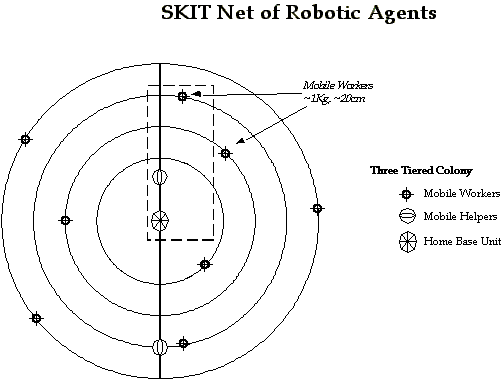
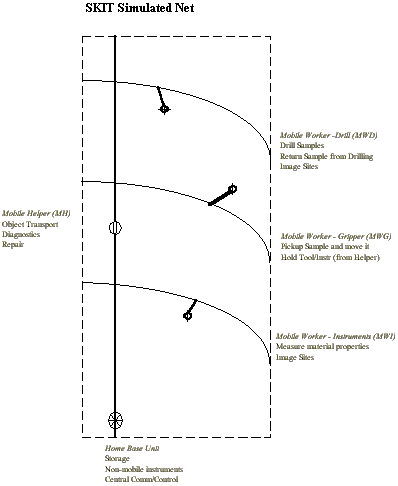
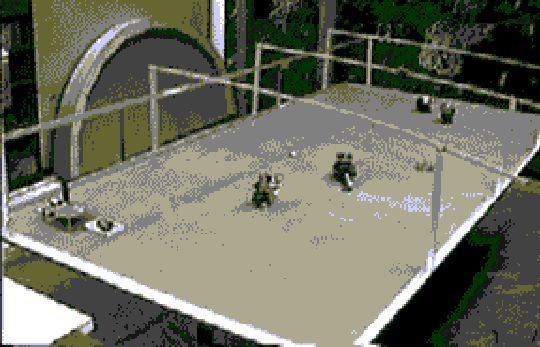
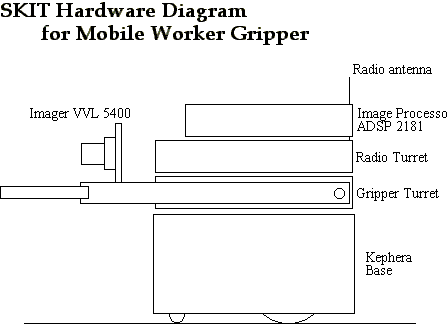
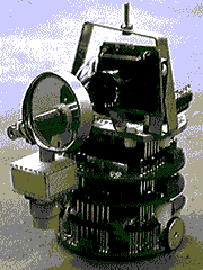
Mobile Worker Instruments
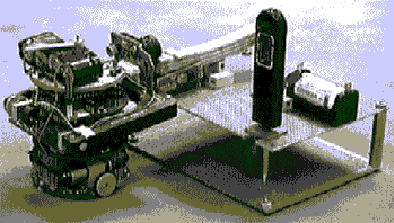
Mobile Helper
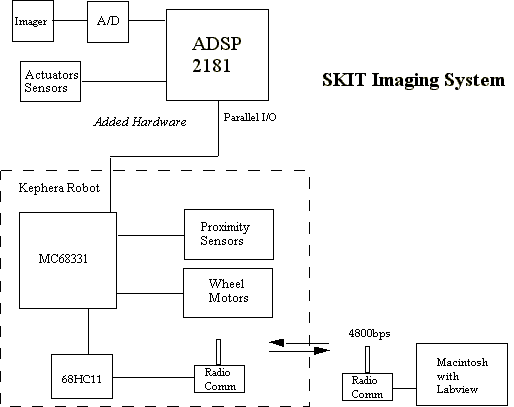
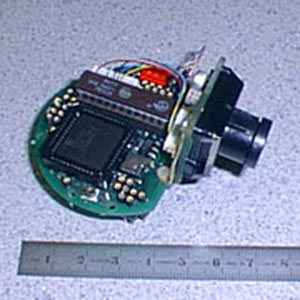
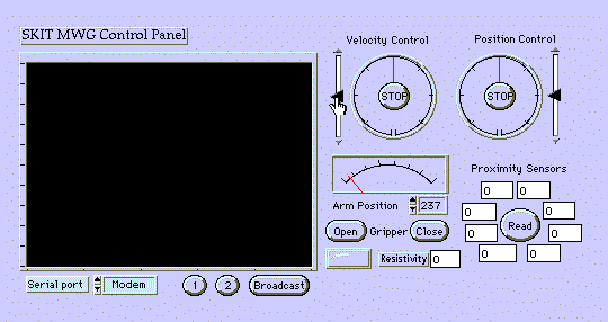
1) Sub-Kilogram Intelligent Tele-robot (SKIT) Concept Development
- Focus:A study on the relative merits of a colony of miniature intelligent,
tele-robots for exploring an asteroid's surface
- Concept development on a novel exploration colony
which used a net to provide a group of heterogeneous robots attachment
and mobility
- This work motivated a desire for new simulations
to generate guidelines for critical robot colony
parameters
2) SKIT Robot Colony Simulator Experiments
- Performed preliminary
robot colony parameter experiments to assess simulator utility for future
analysis
- A graphics program
for the animated display of the world, the robot colony, and other entities
in the world
- Algorithms to enforce constraints
- Algorithms to keep track of entity states
- Algorithms to decide the operations of the robots
- A user interface to setup and conduct experiments
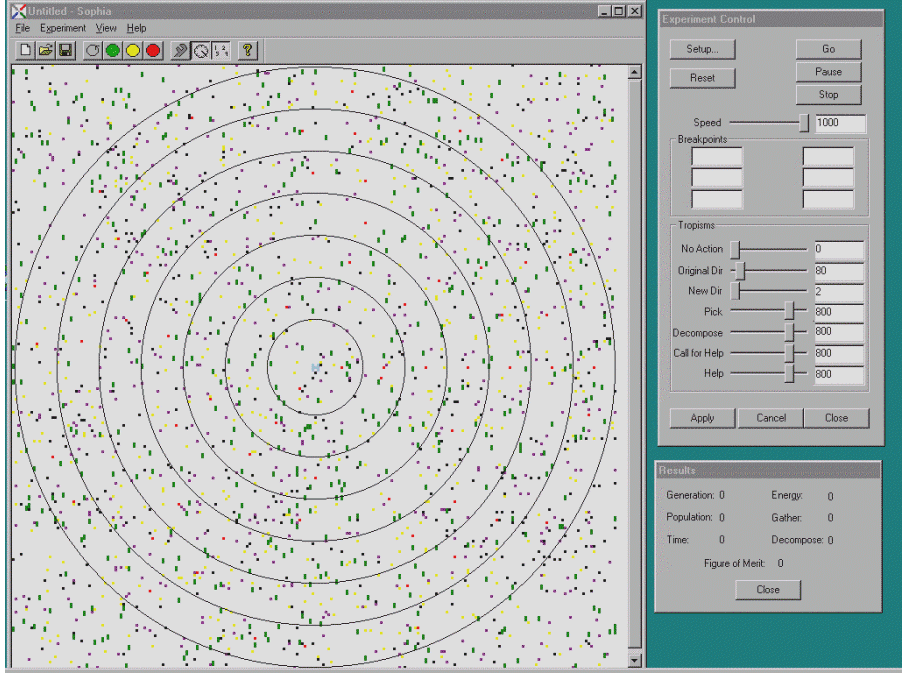
Parameters: Object Count: varied from 100-500 in increments of 50
Fixed: agents=20, obstacles=10, time=500
Result: As object density increased, so did performance and energy consumption.
An average of 75% of objects were found each time.
Obstacle Count: how is robot colony performance affected by obstacle density?
Parameters: Obstacle Count: varied from 10-500 in increments of 50
Fixed: objects=10, agents=20, time=500
Result: As obstacle density increased, so did energy consumption.
This effect was not as significant as expected.
Colony Size: what is the effect of colony size on colony performance?
Parameters: Robot Population: varied from 10-100 in increments of 10
Fixed: objects=10, obstacles=10, time=500
Result: As the colony size increased, performance improved linearly until 20.
Afterwards efficiency (tasks accomplished/energy) reduced drastically
Finite resources makes large groups idle during periods of scarcity
Experiment Set I (Colony Population Effects)
- Base Simulation: population varying from 1-100
in increments of 10
Fixed{ samples: small =500, large =500, dual =500, obstacles =500}
- 1) each type of sample varied from (0-1000, increment
10)
- 2) obstacles varied from (0-1000, increment 100)
- 3) type of sample, # of obstacles varied concurrently
(0-100, increment 20)
- 4) The above experiments done with short
(100)
and long (500) times.
- This results in 1,300 simulations.
- Each simulation performed 10 times with different
initial robot locations
- Performance means and standard deviations results reported
-
Base Simulation: population varying from 2-100
in increments of 10
Fixed {sample: small =500, large =500, dual =500, obstacles =500}
1) A run for each population increment, with input from user recorded
2) Each type of object varied from (100-1000, increment 300)
3) The above experiments done with short (100) and long (500) times.
This results in 200 simulations.
Each simulation performed 5 times with different initial robot locations
Performance means and standard deviations results reported
-
Base Simulation: population varying from 1-4 in
increments of 1
Fixed {samples: small =20, obstacles = 20}
1) Five runs for each population increment
2) Each type of sample varied from (20-40, increment 20), Three runs
3) The above experiments done with short and long times (units currently unknown)
This results in 88 simulations.
Performance means and standard deviations results reported

- A system engineering
approach is demonstrated to quickly generate a novel colony design
(Kepner-Tregoe decision analysis
paradigm)
- Unique concept for
a robotic colony that uses a system of tethers to work in a simulated low
gravity environment
- Development of the SKIT colony simulation
- Validation of the simulation with hardware robots
- Guidelines, spawned from extensive simulations,
for critical parameters used in designing exploration robot
colonies

